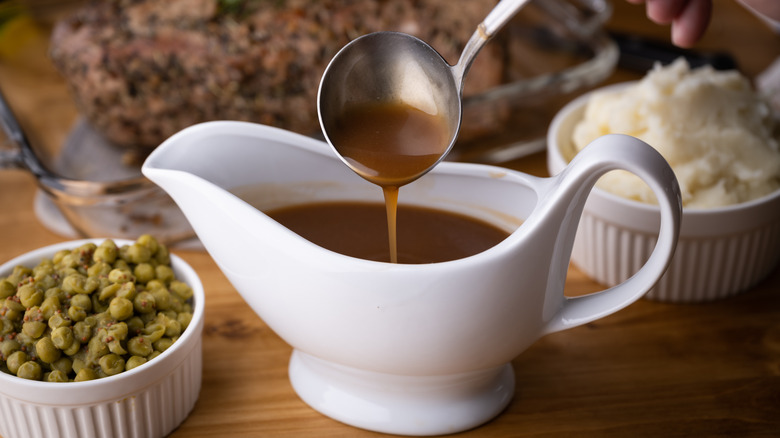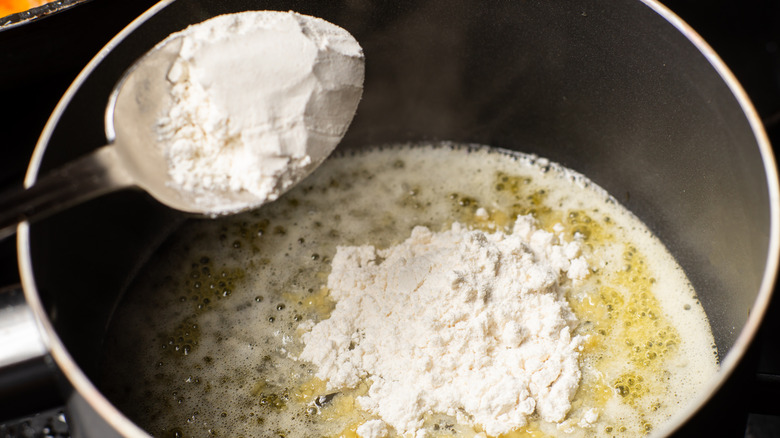The Order You Add Ingredients Matters When Making Gravy
There are different types of gravy like the thick brown sauce served on Thanksgiving and the creamier version with bacon or sausage that you put on biscuits for a comforting breakfast. But no matter what kind of gravy you are whipping up, the order in which you add the ingredients to the pan is important. What happens if you don't follow the right order when making a pan of gravy? It could affect the consistency, flavor, and texture. For example, the gravy could turn out watery. Or, it might end up with clumps of flour that didn't have the chance to dissolve, which won't taste very good.
Before we get into the details, here's the standard order of adding ingredients to a pan when you're making delicious gravy: You start by putting your preferred fat in the pan, then add a thickener to start the base of your gravy. Next comes the liquid to deglaze the pan and give the gravy its thinner texture. Last goes the seasonings like salt and black pepper to ensure all of the gravy has even amounts of flavor and spice. Of course, depending on what kind of gravy you're making, the types of fats, liquids, and seasonings vary.
Easy ways to make gravy
If you're making a traditional gravy to put on top of meat like turkey, start by collecting the drippings. You'll place the drippings in your pan and use it as your fat instead of butter. Then, the flour goes to thicken the fat. You can also use cornstarch. This is a stronger thickener, so you'll need about half the amount compared to flour. Now it's time to use your liquid to deglaze the pan. You can use water or stock if you want a brown gravy, dairy-like milk if you want a creamier consistency, or a combination of liquids. Finally, add the seasonings and let it thicken before serving.
For a denser gravy with bacon, dry beef, or sausage, the process is a little different — but the order of adding the ingredients remains the same. Start by cooking your protein in a pan, and then use that rendered fat to start the gravy. You can remove the meat before you start the gravy-making process, or you can keep it in the pan. Then, add your thickener like flour to the fat, slowly pour in the dairy, and finish it off with salt and black pepper. If you remove the protein from the pan, add it back to the pan while you let the gravy thicken before serving.

